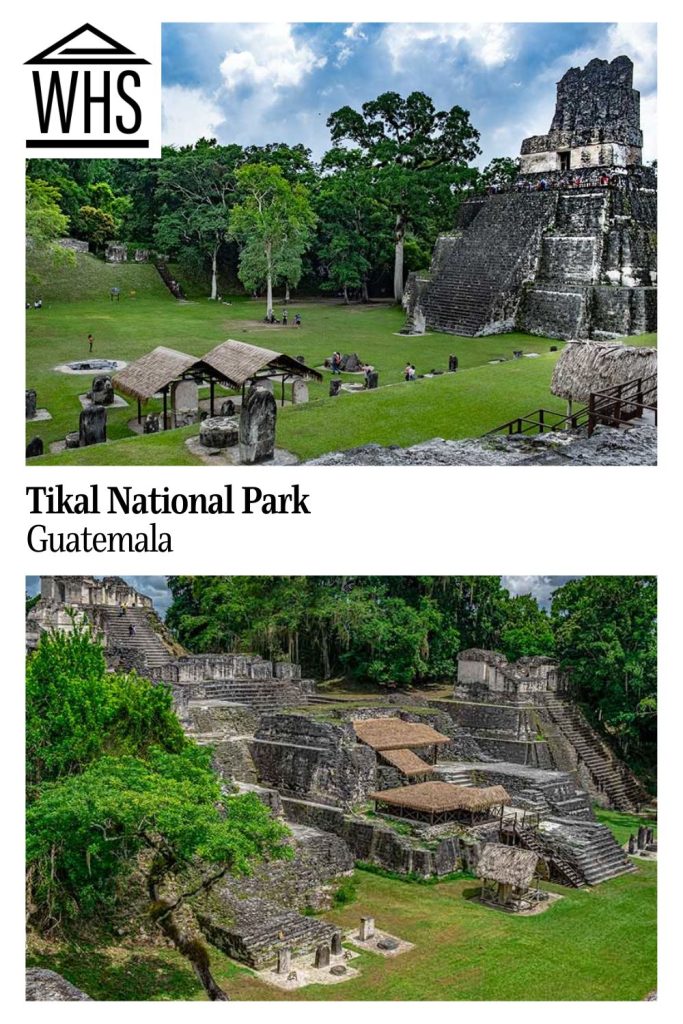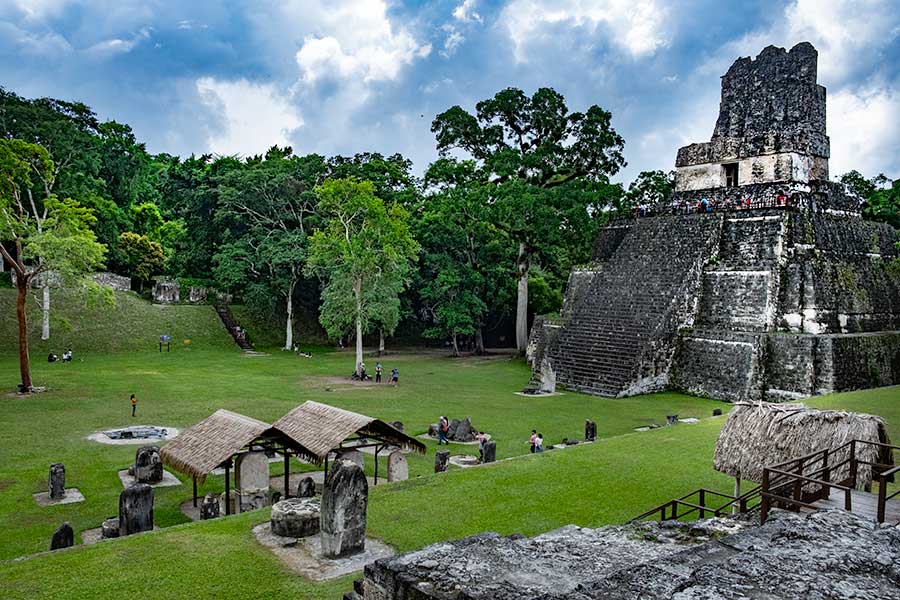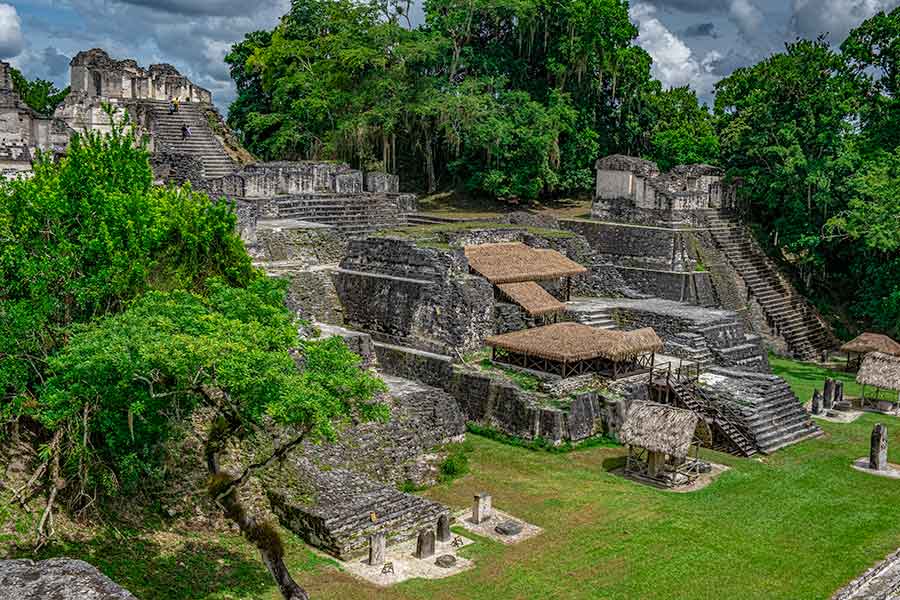Tikal National Park
By Pati
What is Tikal?
Tikal, located in the middle of the Guatemalan rainforest, is one of the most significant archaeological sites of the pre-Columbian Maya civilization. It is said that it was called Yax Muta by the ancient Maya and is one of the best excavated Mayan ruins in the world.
Disclosure: This article contains affiliate links. Making a purchase through an affiliate link will mean a small commission for this website. This will not affect your price.

Its size is impressive, with over 3,000 structures on the site, and hiking through what is now Guatemala’s National Park of Tikal is a fascinating adventure. It’s one landmark in Guatemala that brings visitors from all over the world.
Some of the buildings at Tikal date to the fourth century BC, and at some point, this city dominated the Maya region politically, economically, and militarily, making it one of the most significant states in Maya history.
At the dawn of the Mayan Empire, the population gradually abandoned the site. Although many historians claim that it was primarily due to droughts and crises caused by deforestation and overpopulation, we still cannot know for sure. After Tikal was abandoned, a dense forest grew over it, but the legend didn’t die, and coming generations passed a story of the city.
It wasn’t until 1984 when the first modern explorers and archaeologists started visiting the site and gradually started to clear, map and record the ruins. Due to Tikal’s remoteness and lack of roads, it was very challenging to explore the ruins.
Now, Tikal National Park is the largest excavated site in the American continent, bearing testimony to the greatness of ancient Mayan civilization and the majesty of nature.
Why is Tikal a UNESCO World Heritage site?
Tikal was declared a UNESCO World Heritage Site in 1979 and is one of the very few World Heritage properties listed due to both natural and cultural criteria – its biodiversity and archaeological importance. Tikal is one of the most important sites left by the Mayan civilization. The UNESCO website says that “Tikal has enhanced our understanding not only of an extraordinary bygone civilization but also of cultural evolution more broadly.”
Among many criteria for listing Tikal as a World Heritage site, UNESCO includes Tikal’s impressive diversity of flora and fauna and the fact that Tikal represents an “outstanding example of the art and human genius of the Maya” as well as “the cultural evolution of Mayan society from hunter-gathering to farming, with an elaborate religious, artistic and scientific culture.”

What can you expect on a visit to Tikal?
After around an hour and a half of travel through the Guatemalan rainforest, you will arrive at the gate of Tikal National Park. The most popular way of visiting is via organized tour. It is a large site, and the tour typically lasts around four hours. Here are some options for tours.
Tikal, given its tropical location, is pretty hot and humid. It is a fascinating place, but the heat can be exhausting, so make sure you pack plenty of water and snacks to keep your energy levels up.
There are a few rest points with small cafes and public toilets spread across the park and plenty of places to rest. What could be better than lying on the green grass on the Great Plaza in front of an ancient Mayan pyramid?
The fauna and flora in Tikal are spectacular. Make sure you look out for exotic birds and fascinating animals as well as flowers and magnificent trees. The tour guide will reveal the history and all the fascinating stories about Tikal, but you can also choose to visit the ruins independently.
There is something magical and unforgettable about strolling beside the ancient buildings, pyramids and temples built by this powerful civilization surrounded by an air of mystery.

Is Tikal worth visiting?
Tikal is one of the most fascinating sights to see in Guatemala and is definitely worth a visit. Mayan history is captivating and still filled with mysteries, which makes visiting Tikal even more interesting.
Tikal was the capital of one of the most powerful states of the ancient Maya kingdom, with some of the buildings at Tikal dating back to the fourth century BC. It is also one of the best-excavated sites (although work continues to this date), so if you are fascinated by Mayan history – this is a must-visit!
And if you are a Star Wars fan, you should know that George Lucas used Tikal as a filming location for the moon Yavin 4 in the first Star Wars film, Episode IV: A New Hope.
Tips for visiting Tikal
The majority of the visitors opt for an organized tour, but the park can also be visited independently.
Take cash for the Park entrance and plenty of water and snacks. They can also be purchased on the site but will be significantly more expensive.
You can also book a sunset or sunrise tour, but those will cost you more. The sunrise isn’t recommended as the park is often covered in mist at this time of the day. The sunset tour is much better as the sunset is spectacular, and you will also walk during the cooler time of the day. Theoretically.
Please don’t litter; dispose of rubbish at designated points. Also, don’t feed the animals.
Pack comfortable shoes (there is a lot of walking involved), breathable and comfy clothing and a rain jacket. Tikal is set in a tropical forest. It gets hot and sticky, but a sudden shower is also very common.
Don’t forget mosquito repellant and sunscreen. You will need them both.
Bring your camera, but the use of drones is forbidden in the park.
To read about some other UNESCO-listed Mayan sites, see Chichen Itza, Palenque, and Uxmal in Mexico and Copan in Honduras.
Where is Tikal?
Tikal National Park is located in the department of El Petén, in the Northern part of Guatemala, set remotely in the middle of the tropical rainforest.
The best town in Guatemala to place yourself for a trip to Tikal is Flores, but a Tikal tour can also be organized from other towns in Guatemala. Flores is a very lovely, colourful lake town so you can combine your visit to Tikal with a couple of days in Flores. You can also book a hotel right in front of the park but staying in Flores and taking a day trip from there is, in my opinion, the best option.
Look for your accommodations in Flores by using the map below:
There is a car park located not far from the park entrance, and you could reach Tikal by car from Guatemala airport in around 7 to 8 hours, but this is one of the least popular ways of visiting the site.
There are also organized tours from Antigua and Atitlan Lake, but yet again, this could make for an exhausting and expensive trip, which is why Flores is the most comfortable and pleasant option.
Tikal can also be reached from San Ignacio in Belize, as it is only a couple of hours of a bus ride from the Belizean border. Please check the current border restrictions before travelling as some of the land borders within Latin America could be closed.
For more information about Tikal National Park, its opening hours and admission fees, see its official website.
Have you been to Tikal National Park? If so, do you have any additional information or advice about this UNESCO World Heritage site? Please add your comments below!
